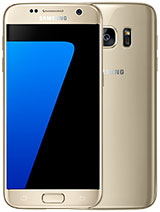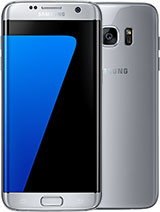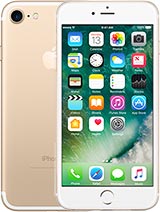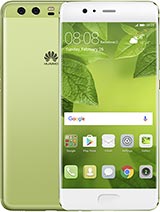Samsung Galaxy S8 review: Essence distilled
Essence distilled

Final words
The Samsung 2017 flagship, compact edition. Can the Galaxy S8 make even the die-hard fans of the big-screen experience consider converting? Think about it - you get so much screen in a phone that's practically as wide as a iPhone 7. Heck, the S8 is just 3mm wider than the Sony Xperia Z5 Compact, the last of the true Xperia Compacts.
 The Samsung Galaxy S8 - like the +, but smaller.
The Samsung Galaxy S8 - like the +, but smaller.
It is tall, okay. But tall is not what makes a phone hard to use with one hand, wide is. And wide the Galaxy S8 isn't.
But for all its pocket-friendliness, the Galaxy S8 is pretty much identical to its less space-conscious sibling - the same processor, cameras and software - only less battery, and smaller diagonal. Best of all - easier on the pocket in that other way.
Samsung Galaxy S8 key test findings
- The S8 is very compact - both for its screen size and in absolute terms. We'd say it sets the benchmark for flagship pocketability.
- The all-glass body is a little slippery, but it's stylish and scratch-resistant too, courtesy of Gorilla Glass 5 front and rear. The IP68-rated environmental protection is much appreciated.
- The display is simply gorgeous. It's sharp, bright, AMOLED-punchy or sRGB-accurate (why do it to yourself though), and contrast in direct sunlight is the highest we've ever measured - where do we go from here?
- The S8 is really versatile when it comes to connectivity. Gigabit LTE is a particularly nice treat, although few places have support for such massive bandwidths. Bluetooth audio streaming to two devices simultaneously, although not perfect, is also a neat little trick. We also appreciate the presence of DisplayPort video output over Type-C.
- Unlocking options aplenty. Iris recognition is secure and works most of the time, provided you look at the phone the right way. Face recognition is a touch less demanding, but not as secure as the fingerprint reader. We wouldn't put the fingerprint reader where it is, but on this more compact S8 it's at least usable.
- The wide 2.06:1 aspect is useful for texting, browsing, multi-tasking, and gaming, but not great for photo viewing (camera shoots in 4:3 natively) or video watching (yet). Content should be coming soon, while non-cooperative apps mostly work just fine. We'd take black bars over bezels.
- Onscreen navigation is new to Samsung, but it's practically standard on modern droids, so shouldn't be an issue. The haptic feedback is nice, and being able to rearrange the Back and Recents buttons is a nice touch.
- Multi-window on the S8 is a few steps ahead of the Nougat default implementation. A standout feature is the new Crop View that lets you select a portion of an app or web page and have it sit and function on its own. Edge panels could potentially be very useful, if set-up properly.
- The S8's single bottom-firing loudspeaker managed a Good score in our loudness test.
- The Exynos 8895 chipset delivers a chart-topping performance in both CPU and GPU synthetic benchmarks. It even outpaces the Kirin 960 in multi-threaded jobs. The Mali-G71 MP20 GPU manages to impress even at the phone's native QHD+ resolution.
- 'Loud and clear' is an accurate summary of the S8's audio output through the 3.5mm audio jack.
- The 12MP camera has the same class-leading Dual Pixel auto focus as the S7. Image quality may have only marginal improvements in daylight stills but the new Multi-Frame Image Processing delivers noticeably cleaner and sharper low light photos. Video capture quality is also mostly unchanged over the previous generation, but the S8 now offers EIS all the way up to 4K. Though coupled with OIS it does tend to make the footage wobble at times.
- The 8MP selfie camera is a major upgrade in terms of image quality and comes with auto-focus. Samsung also included a big collection of filters, stickers and dynamic facial effects to raise your selfie game. Selective focus effect has limited application but does a decent job.
What's the most troubling bit about the S8s, big or small, is that they're not all that different compared to last year's models. If the sexy new design isn't top on your priorities list, the Galaxy S7 will do just as well 95% of the time, and you can even treat yourself to some curves with the S7 edge, while saving some cash either way. Pragmatically speaking, what you'll be missing out on is that multi-image camera processing in the dark, the infinity screen and... and... not much else, really.


Samsung Galaxy S7 • Samsung Galaxy S7 edge
Then again, you might want to keep up with the times, and opt for something larger than 16 to go against that 9. Currently, that's the LG G6 only. LG's latest isn't as powerful as the S8, nor is it as compact, but it's got two cameras on its back and the ultra-wide angle one is massive fun. Its display is neither curved, nor AMOLED, but it does support Dolby Vision on top of the S8's HDR10. It's also got a much more sensibly placed fingerprint sensor.
Since it's all about priorities, if you're eyeing up the S8 for its pocketability first and foremost, you can't not look at the iPhone 7. A whole different platform, yes, but a valid dilemma if you've finally given up on those Windows-powered Lumias and you're searching for a direction.
The Pixel is an ugly duckling that's not turning into a swan anytime soon, while the S8 is hard to beat for looks. Google's phone packs a lot less screen in a larger body than the S8, but it comes with the added benefit of stock Android, lifetime unlimited cloud storage for photos and video, and, well, still a better low-light camera. You may not be able to get your hands on one, though, because Google.
Why not a Huawei P10, then? Again, it can't stand up to the S8 in screen-to-body ratio comparisons, but with two cameras on its back it's got double the Samsung's shooters. And it's also more affordable.
At a time when 5 inches is about the norm for display size on a mainstream smartphone, it may be surprising to hear us describe the 5.8-inch Galaxy S8 as compact. We already read the aspect ratio lecture a bunch of times, so enough of that.
We'll say it again though, the Galaxy S7's are still quite relevant - especially if the new season's outfit, including a brilliant infinity screen, is not your main reason to update. That said, there's one more thing to like about the 8th generation - you no longer have to choose between a classic and a premium set.
All of what's great about the S8+, you can find on the S8, but in a smaller package for added convenience. Sounds like a win.
Reader comments
- Dugz
- 23 Jan 2025
- PxY
Can't seem to find screen-shot in the Samsung S8, any help??
- Anonymous
- 18 Nov 2024
- CG1
What is the latest android version of s8
- Josyle
- 04 Oct 2024
- xjH
How much


